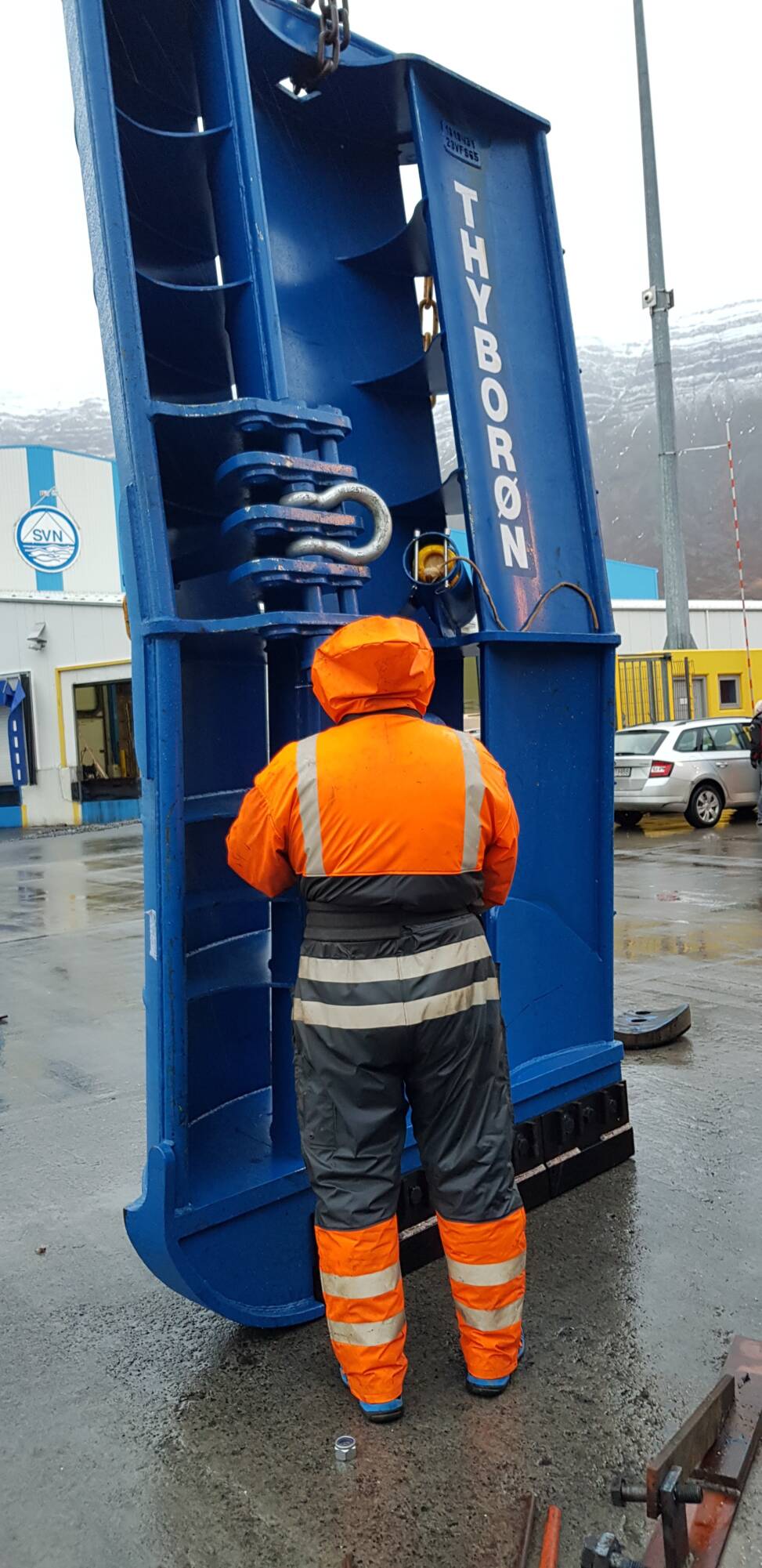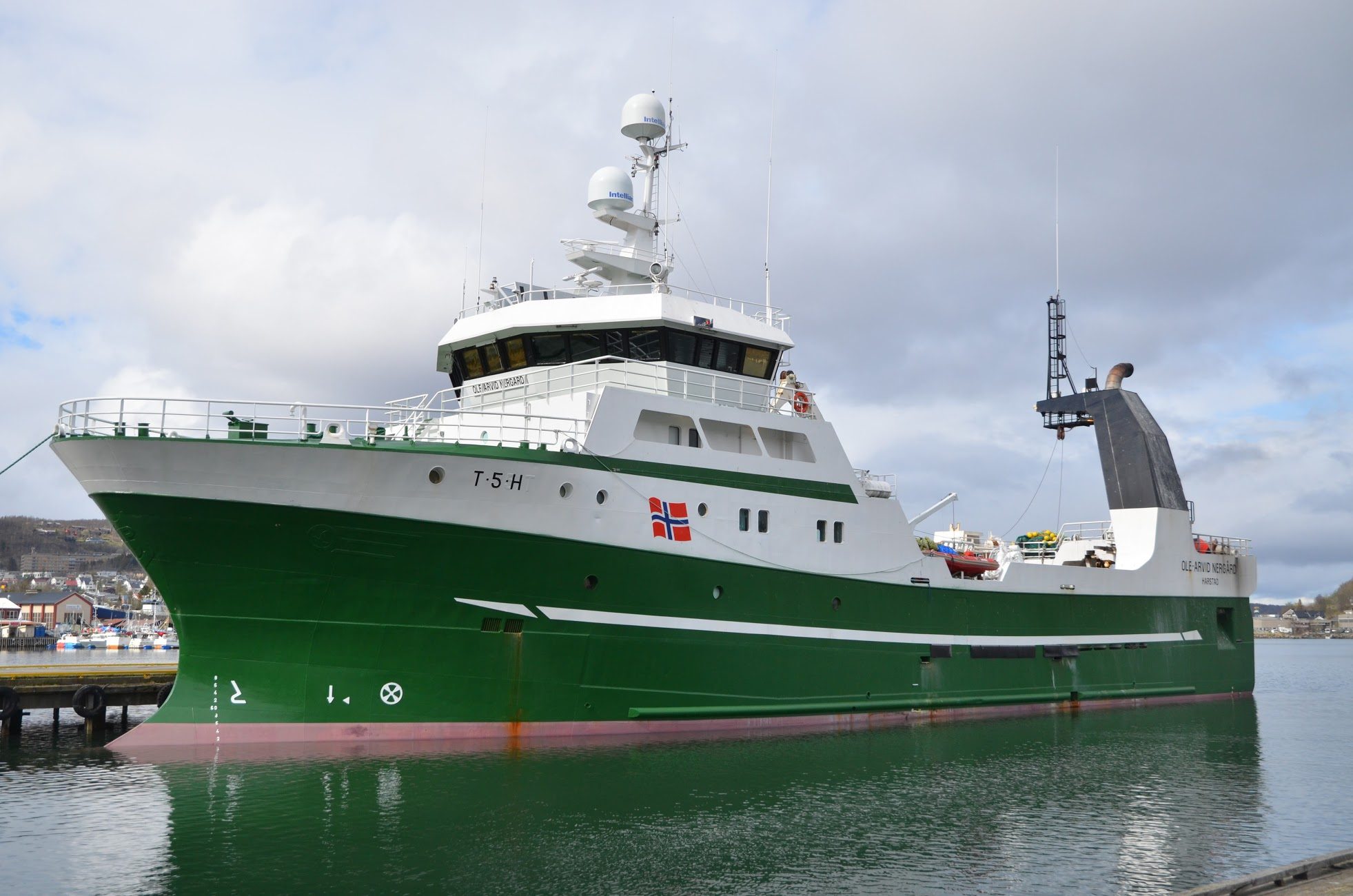New smaller trawl doors offer bigger spread, reduced fuel consuption
Fishing trials show effectiveness of new Thyborøn Trawldoor Type 23 Bluestream doors.
Trawl doors manufacturers Thyborøn Trawldoor is introducing its new Type 23 Bluestream doors.
The doors have been developed using the company’s experience with the dimensions of it Type14 doors and the effectiveness of the company’s Type 22 doors with the implemented Bluestream special technology, in which the waterflow is forced to its maximum through the foils of the door, thereby creating a more powerful spread force and less drag resistance on the doors.
The feedback from trials of the new Type 23 Bluestream doors from several vessels yielded extremely positive results, the company said.
“These powerful doors are giving much greater spread without any reduction in catch rates, whilst retaining normal, or even reduced, fuel consumption,” said Tonni Karlsen, skipper of the 54.6 meter twin rig trawler Ole-Arvid Nergard.
The vessel fishes in the Barents Sea, Svalbard area and off the Norwegian coast fishing for cod, saithe, haddock, redfish and shrimp.
With its 17-man crew working trips ranging from two to five weeks, the 2001-built Ole-Arvid Nergard, has a frozen hold capacity of 420 tons, making it important that catch volumes remain constant so the vessel can maximize its catch during its fishing trips.
“It is therefore important that when we considered changing our trawl door supplier that we didn’t sacrifice any catch-per-tow volume, even if the spread was improved,” said Karlsen.
“But we certainly have no concerns now with these new Type 23 Bluestream doors, as they have increased the spread of our gear by an amazing 50 meters and without losing any catching capacity in the process,” he said, adding that with the new doors, the vessel’s fuel consumption has not increased and is even slightly less than with their previous doors.
“What is fantastic about these doors is the fact that they ‘spray’ (spread) from the moment you start shooting away the gear, so when the trawl hits bottom you can see that you already have the maximum spread that you need — and they are so incredibly stable that they maintain this spread through the duration of the tow without any problems,” Karlesen said.
Ole Kjaergaard, who has been with the Thyboron Trawldoor company for over 25 years, said the company’s doors are an advantage for fishermen facing higher fuel costs.
“If we switch our own well-known Type 14s 10m2 with a Type 23 Bluestream 9m2 there is up to 50 percent less resistance on the doors when pulled through the water without any bottom friction or contact, meanwhile they produce same powerful spread on the nets,” he said.
The Type 23 doors are constructed using the same steel plates that are made for shipbuilding and require less maintenance.
World-leading net manufacturer Hampiðjan in Iceland recently undertook trials with the new doors and their top gear technologist, Kristinn Gestsson, described the new Type 23s as “highly promising.”
Gestsson joined the trawler Kaldbakur recently for a trial trip with the new doors to give them their initial baptism under Icelandic conditions. and he reported back that the performance results took both him and the crew by surprise, the company said.
“These Bluestream doors are incredibly powerful,” he said, explaining that Kaldbakur had been using Type 14 doors and fished well with them.
“Those were 7.5 sq. meter doors, but the new Type 23 Bluestream pair we tried out are a whole meter smaller at 6.5 sq. meters and weighing 3,800 kilograms.
“Generally, it is expected that the door spread at a reasonable trawl depth is roughly the length of the sweeps, and that fits with the previous experience of the Type 14 doors where the sweepline length was 137 meters and the door spread was the same.
“But by switching over to the Type 23 doors, the spread jumped to 148 meters and towing at a depth of 200 meters, the doors were from 2 to 7 metres off the bottom,” he said.



